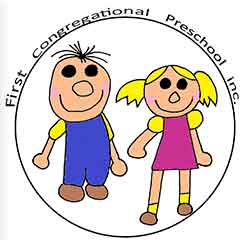How much should my child eat?
The dietary needs of young children are often a concern for parents and families. This question applies to many families of children, whether children are young or teens, parents worry that their children are getting the proper nutrition. As more and more young children are becoming what can be classified as “obese,” the concern for proper nutrition grows. Currently, nearly 1 in 3 children in the US are obese.
Young children grow in spurts, and their nutritional needs match their grow spurts, there will be days when they are constantly hungry and other days when your child barely eats. As parents, we need to trust in our children, let them “eat when they are hungry, stop eating when they are not.” Your job is to offer the foods, deciding which foods to offer and when to offer them, it is the job of your child to eat them or not and how much to eat. The cues that they learn now, and the self-regulation skills they develop now will help them to develop healthy relationships with food as they grow.
The basis for their diet should consist of calcium rich foods and fiber rich foods.
Calcium can be found in fortified cereals, milk and leafy greens.
Fiber rich foods are also vital for good nutrition. Now is the time to offer fiber rich foods to children, such as fruits and vegetables along with whole grains and beans. Not only does fiber prevent heart disease and other conditions, but it also helps aid digestion and prevents constipation, something you and your child will be thankful for.
Water is also another healthy component of a preschooler’s diet. Water makes up more than half of kids’ body weight and is needed to keep all parts of the body functioning properly.
- There’s no specific amount of water recommended for children, but it’s a good idea to give them water throughout the day — not just when they’re thirsty.
- If your child doesn’t like the taste of water, add a bit of lemon or lime for flavor.
- Fruits and veggies are also good sources of water.
- Kids should drink more water when ill, when it is hot out, or when engaged in physical activity.
What do I do if my child is a picky eater?
- Offer new foods one at a time and remember that children may need to try a new food 10 or more times before they accept it! Also, offer new foods at the start of meals when your child is hungrier.
- Avoid “short order cooking.” Serve at least one food you know your child will like, but then expect him or her to eat the same foods as the rest of the family.
- Make food simple, plain, and recognizable. Some kids don’t like food that is mixed (like a casserole) or food that is touching.
- Sometimes kids will get “stuck” on a particular food. This is normal and is not harmful. You can always include other options with the food they are “stuck” on to add variety.
- Never force your child to eat a food he or she doesn’t like. Offer multiple choices so that he or she can choose something he or she does like.
What if my child is gaining too much weight?
First of all, it is important to talk with a registered dietitian or your doctor about your child’s weight to decide if he or she really is gaining too much. Also, keep in mind that often a child will gain weight before a growth spurt. Here are a few tips to help prevent too much weight gain:
- Eat regularly scheduled meals and snacks. This will help keep your child from getting too hungry, which often leads to overeating.
- Encourage activity!
- Start off a meal by giving your child smaller portions. If he or she is hungry for more, you can always give seconds.
What are some good snacks for my preschooler?
- Grain group: Animal crackers, dry cereal, graham crackers, toast, air-popped popcorn
- Vegetable group: Raw vegetables cut up in strips
- Fruit group: Fresh fruit cut up for finger food
- Milk group: Cheese, cottage cheese, string cheese, yogurt, frozen yogurt, milk
- Meat group: hard-boiled eggs, lean lunch meat slices such as turkey, chicken, or ham, tuna salad
Additional tips:
- Set a good example of healthy eating for your child.
- Plan regular meals and snacks and give kids enough time to eat.
- Don’t use food as a reward.
- Involve your children in making the food.
- Use child-size plates, cups, forks, and spoons.

Leave a Reply